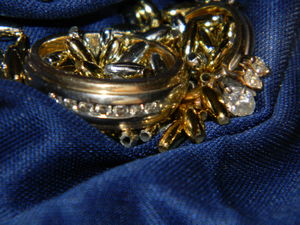Sugar In The Raw has become the marketing face of turbinado sugar in America, boosted to popularity largely through nationwide adoption by Starbucks and many other coffee shops. Turbinado sugar differs from regular brown sugar in that it is made from the juice of freshly cut Hawaiian sugar cane, which is evaporated and then crystallized. The final step in the process is to run the crystals through a turbine to remove plant material and dry them out, which creates the larger granules and paler color.
Sugar In The Raw is a bit of deceptive advertising through clever wording, because it isn’t actually raw sugar. It is partially processed; if you want truly “raw” sugar you’ll have to track down some rapadura (dried sugar cane juice without the processing to remove molasses) at your local organic foods store. That doesn’t necessarily mean that Sugar In The Raw is as bad as refined white and brown sugars, however. The Sugar In The Raw website claims that it retains “very small amounts of” the nutrients that are bleached totally out of most refined sugars. As you may know, it is the complete loss of these nutrients that causes the health problems associated with refined sugar – to process these empty carbohydrates, the body has to leach minerals and nutrients from elsewhere inside of you, and eventually starts working on your bones and teeth to get them once it exhausts the other reserves. It also stores the glucose by-product in your “non-essential” areas from a body function perspective, which is where the rolls of fat around the abdomen, and the plump buttocks and thighs tend to come from when the rest of the body doesn’t seem to be putting on weight.
Unfortunately, these nutrients are apparently not present in Sugar In The Raw in quantities to get them listed on the FDA mandated Nutrition Facts list. Therefore, it is hard to say if they are present in enough of a balance to make a difference as far as health is concerned. We can safely assume that, due to the relatively lower amount of processing involved in making Sugar In The Raw, and the fact that it retains some of the sugar cane juice, it is less likely that there is a complete loss of the needed nutrients. However, we don’t really know if there are enough left to make Sugar In The Raw a net overall health gain for your body. It may be that it is just a few degrees less damaging than typical refined sugar.
From a food preparation perspective, the larger and tougher granules actually make Sugar In The Raw tougher to dissolve into beverages. You have to put in much more heavy-duty stirring to get it dissolved into coffee, for example, which is funny considering how the main marketing thrust of it seems to be as a substitute sweetener at coffee shops. From looking around at the websites of professional chefs, it seems that the main use of Sugar In The Raw for food prep is that it functions well as a sweetener for certain wines!
So, all in all, Sugar In The Raw seems to be at least somewhat less likely to leach your minerals, make you crazy and make you fat than regular refined sugar. If it is the only option at your coffee shop or local Piggly Wiggly, and you absolutely have to have your sweets to get through the day, you are probably better off with it than you were with the plain refined sugar. However, if you really want to ensure you are getting the most healthy option in terms of a sweetener, you really need to track down a completely natural and unrefined sweetener, which means a trip to your local organic or raw foods supplier.



